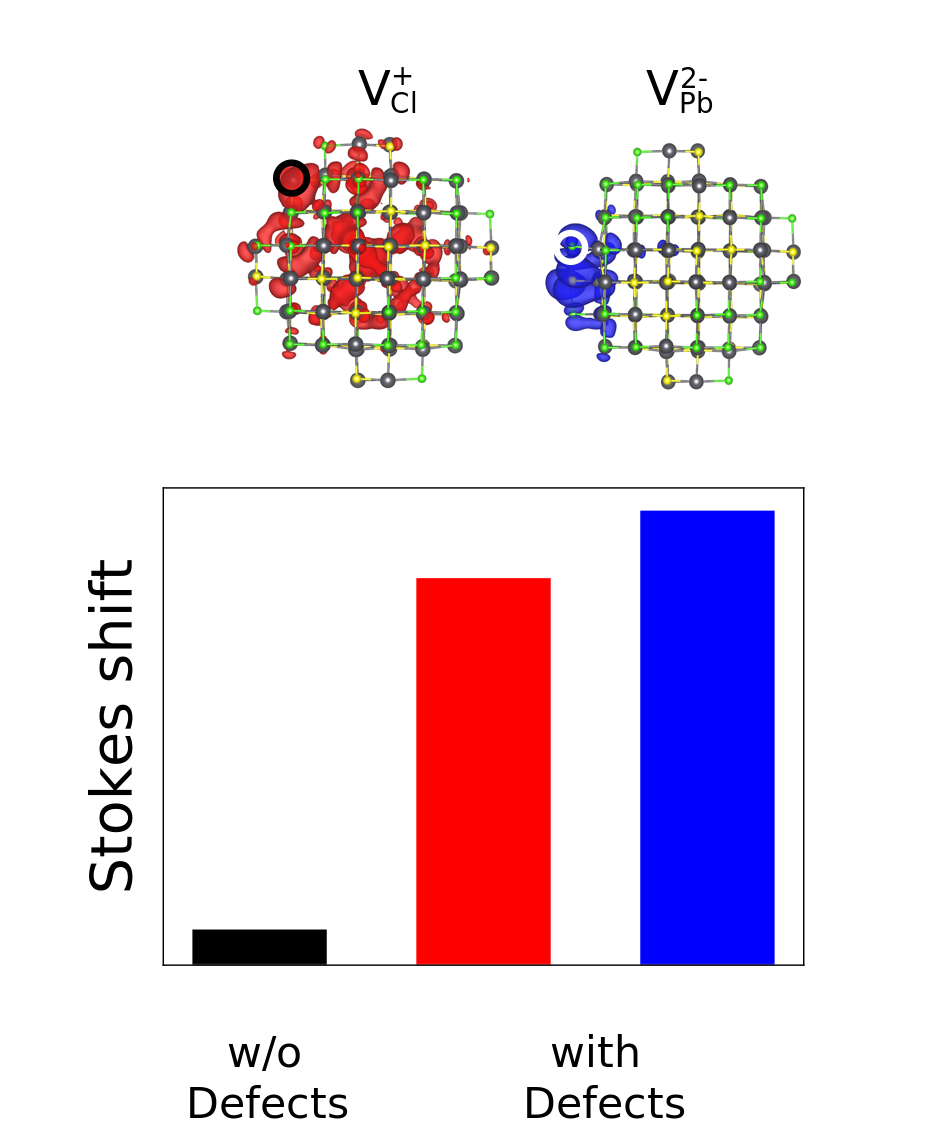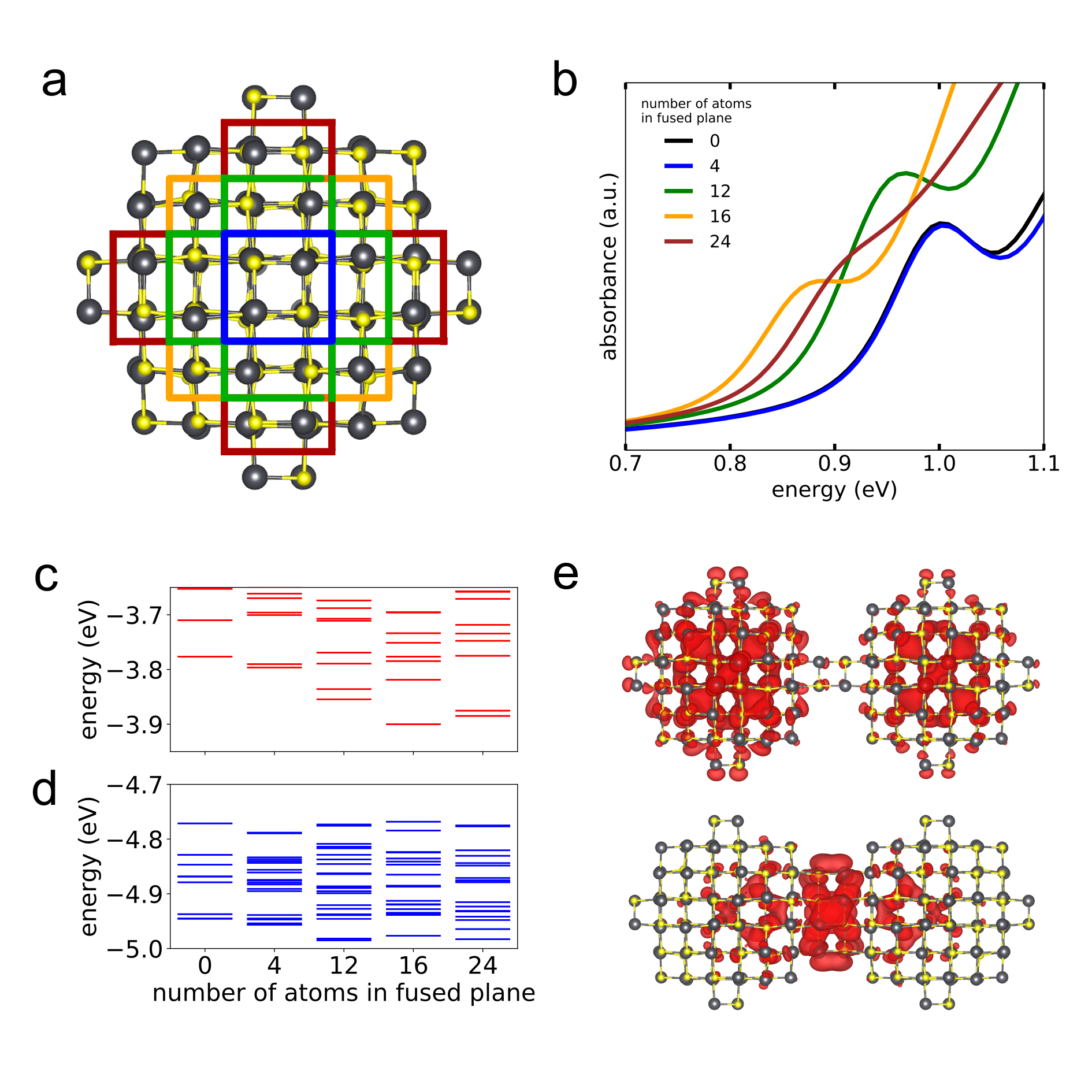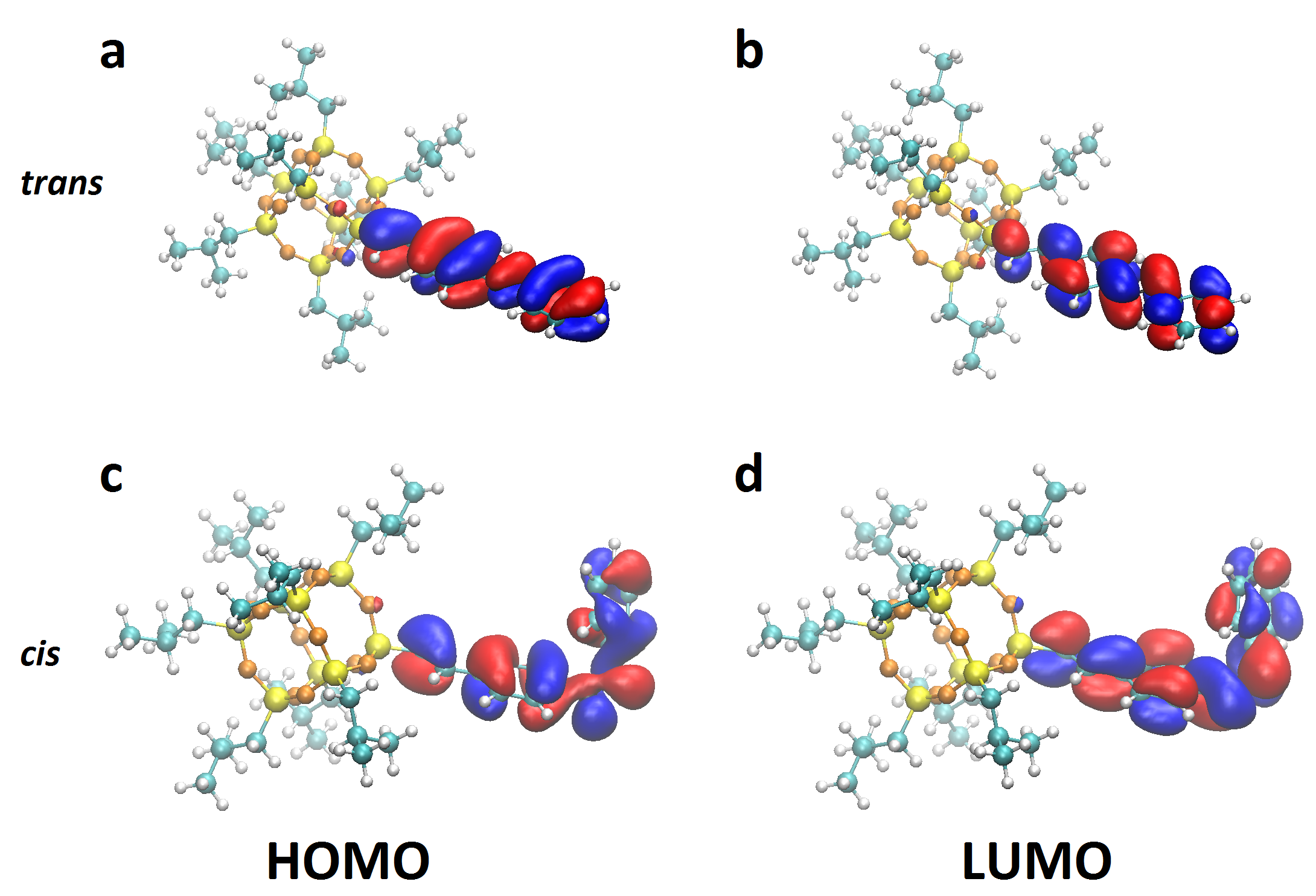Yun Liu
PbS Colloidal Quantum Dots


Colloidal semiconductor nanocrystals, or quantum dots exhibit size tunable optoelectronic properties and facile processing in solution. These materials have received wide applications in solar energy conversion, light emitting diodes, infrared imaging and lasers. In collaboration with experimental groups, we have used ab initio calculations to enhance our insights into the origins of 1. Stokes shift and 2. trap states in PbS quantum dots.
1. Systematically investigated and quantified the contributions to the Stokes shift in PbS CQDs from film polydispersity, ligands and defects. Identified the source of the excessive Stokes shift (Franck-Condon shifts) as due to the presence of stable intrinsic defects such as VPb2- and VCl+ (in Cl passivated CQDs), reconciling the discrepancy between previous theoretical predictions and experimental measurements.2. Elucidated that dimers are the origin of a new source of trap states in highly monodisperse PbS CQDs solids. Traps are typically attributed to surface states, but our first-principles calculations show a new quantum confined state forms in the fused region of PbS CQD dimers, which depend on the degree of fusing and orientations of CQDs. The LUMO of the new dimer states exhibit spectroscopic signature about 100meV below the LUMO of isolated CQD, consistent with experimental observations.
Lattice Dynamics of Stibnite Sb2S3

I studied the lattice dynamics and electron-phonon coupling in Sb2S3. We obtained phonon dispersion of Sb2S3 and extended the Gruneisen formalism to low-symmetry structure to find that all the thermal expansion coefficients are associated with high-frequency phonon mode at around 290 cm-1. Coherent phonon was observed using femtosecond transient absorption spectroscopy. I determined that the coherent phonon mode possesses B3g symmetry, and that impulsive stimulated Raman scattering is the generation mechanism. This phonon mode is a dominant, intrinsic electron-phonon interactions in Sb2S3 that could impose a fundamental limit on the efficiency of Sb2S3 as photovoltaic material but is highly desirable for thermoelectric applications.
Optical Properties of Functionalized Silsesquixones

Silsesquioxanes are hybrid molecules with three-dimensional, nanoscale structures with the generic chemical formula of [RSiO3/2]n. The rigid core provides high thermal and chemical stability and the peripheral organic arms can be functionalized to give rise to the desired properties.
We designed and synthesized mono- and octa-azobenzene functionalized silsesquioxanes. They exhibits first-order cis-trans photo-isomerization with absorption wavelength at 340nm, and 288nm and 440nm. Transition energies obtained from time-dependent density functional theory and range-separated functional agree very well with experimental data. They are also fluorescent with a characteristic emission at around 400nm.